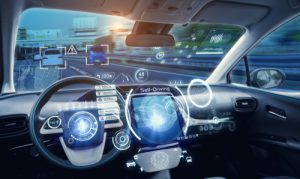 Automation is finding its way into many different walks of life, and our automobiles are no different. All makes and models of vehicles are now starting to see driver assistance systems in various forms. Cars are starting to drive themselves, and these cars also communicate with each other. Lives are saved thanks to driverless cars because traffic accidents go down as a result of safer driving. As these technologies evolve, we will we rely more and more on these systems to keep us safe and navigate the roadways. It is therefore imperative that we understand these systems and how to use them for our benefit.
Automation is finding its way into many different walks of life, and our automobiles are no different. All makes and models of vehicles are now starting to see driver assistance systems in various forms. Cars are starting to drive themselves, and these cars also communicate with each other. Lives are saved thanks to driverless cars because traffic accidents go down as a result of safer driving. As these technologies evolve, we will we rely more and more on these systems to keep us safe and navigate the roadways. It is therefore imperative that we understand these systems and how to use them for our benefit.
How Car Sensors Work
Two of the main components of all driver assistance systems are cameras and sensors. These cameras and sensors are spread throughout the vehicle. It is important that these cameras and sensors always stay clean and free from any kind of debris and not be covered up or restricted in any way. A sensor can easily be inhibited by placing an easy pass or a parking tag in the way, or bad weather can also impact the sensor. Understanding how these sensors operate and how to maintain them properly can help save you money on repairs. There are two typical scenarios of how sensors will not function properly – blocking of the sensor by the driver or bad weather blocking the sensor.
If a driver blocks the sensor accidentally, this can happen if the driver places an object on the inside of the windshield and blocks the sensor. Preventative maintenance scans and routine auto care will usually pick these types of things up and address them if necessary. The second scenario is caused by bad weather blocking the sensors. Let’s say a driver is stuck in freezing rain. The pedestrian warning system keeps coming on in the vehicle. Because the sensors were covered in freezing rain, they began to malfunction.
Different Kinds of Driver Assistance Systems
As we continue to see more and more technological advancements with driver assistance programs, it is important to understand what they all are and what they all do. Below is a list of terms regarding driver assistance systems.
Parking and Backing Assistance – This system uses cameras and sensors to show you how close you are to other objects and vehicles. It is much easier to use than the rearview mirror because of the larger image.
Rear Cross-Traffic Alert – This system alerts you if a vehicle is crossing by when you are in reverse. The system will alert you with a beep and show an arrow on the dashboard.
Forward Collision Alert – This system produces a loud beep through the entertainment system if there is a front end collision likely.
Intelligent Brake Assist – Brakes are automatically boosted and applied if necessary.
Collision Mitigation Braking – This system detects when you should be braking but aren’t. The system alerts the driver and then automatically pushes the brakes for them.
Tailgating Alert – The tailgating alert system warns the driver if they are following too closely to the vehicle in front of them